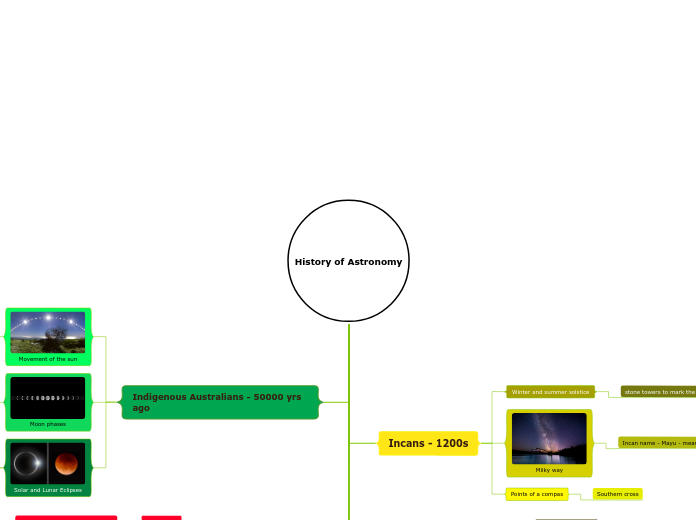door Matisse Musy-Beaton 4 jaren geleden
519
History of Astronomy

door Matisse Musy-Beaton 4 jaren geleden
519

Meer zoals dit
The main purpose of timelines is to display a series of actions within a particular time interval. Timelines can cover a bigger time period, they should not be very detailed. Howbeit, it is possible to add images, data, or figures.
Landed a probe on Titan, Saturn’s largest moon, in 2005
Titan has an atmosphere, like that of Earth, contains both nitrogen and oxygen, but the oxygen is likely to be in the form of ice water
Atmosphere contains a mixture of complex organic molecules
Detailed information on the moons of Jupiter
New insights into the intensity of volcanic activity on the moon Io
Discovered evidence of salt water below the surface of the moons Europa, Ganymede and Callisto
Discovered six moons
One of the moons, Triton is the coldest known body in the solar system.
Neptune has a Large dark spot, similar to Jupiter
Is a giant storm
Larger than Earth
Neptune has system of five faint rings that appear to consist of dust particles
Most distant human-made object ever to have travelled from the Earth
Discovered and photographed many of the gas giants’ moons
All gas giants had ring systems
Most technologically advanced rover ever built
Cruiosity found an ancient stream bed
Mars used to have flowing water on its surface
Mars may be more similar to earth than we thought
Curiosity witnessed and made measurements through a planetary-wide dust storm
There might be microbial life on Mars
Curiosity found sulfur, nitrogen, oxygen, phosphorus and carbon, key ingredients necessary for life, in the powder sample drilled from the "Sheepbed" mudstone in Yellowknife Bay
Surface samples taken from mars show that the dirt there is very similar to that of earth
The dirt on Mars may be capable of sustaining plants
Ancient Mars had the right chemistry to support living microbes
There are occasional spikes in methane gas that so far have no explanation
Gale Crater was capable of supporting life 3.5 billion years ago
Organic matter was present on ancient Mars and has even survived intact to this day
first wheeled vehicle to be used on another planet in the solar system
Water vapour was found to be relatively abundant in the far north during the summer, with the north pole covered permanently in ice
Found essential elements for life
Carbon, nitrogen, hydrogen, oxygen and phosphorus
May still be frozen water beneath the surface
Dried-up riverbeds
Formed by water
Large Volcanoes
Ice caps at the poles
Made of frozen carbon dioxide and frozen water
Mercury has a thin atmosphere with traces of the gases helium and hydrogen and even smaller amounts of several other gases
First close-up photographs of another planet
The pictures, played back from a small video recorder, showed lunar type impact craters
Venus has an extremely hot surface, over 425 °C
Venus has no detectable magnetic field
Venus rotates in the opposite direction to most of the other planets in our solar system
Venus has an atmosphere containing mainly carbon dioxide
He observed the moon and described the lunar surface as uneven, with craters and mountains
moons of Jupiter
Earth was clearly seen not to be at the centre of all planetary motion
four moons are known as the satellites Io, Europa, Ganymede and Callisto
an error of one day in 3770 years
begins each year on 21 March
sun never sets in the North or South Pole
length of the year as 365 days, 5 hours, 48 minutes and 24 seconds
Add date here.
Add the event here.
You can add a few highlights here or if you want to add detailed description you can use the Notes feature.